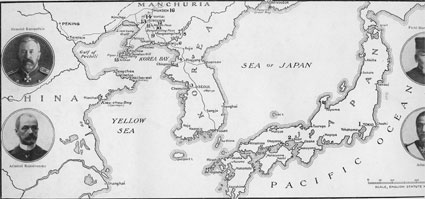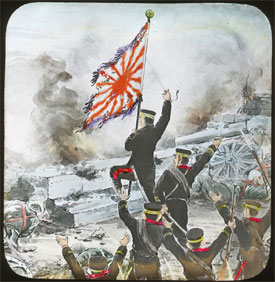
Thus, though for eighteen months a bitter and mighty conflict was waged between two great military nations; though battles, almost unexampled as regards the number of troops engaged and the intensity of artillery fire, were fought -- yet all these bloody encounters and these gigantic operations were carried on, not on the territories of the belligerent states, but within the boundaries of a neutral power! Furthermore, it should be noted that Chinese neutrality had been solemnly guaranteed at the opening of the campaign by both of the belligerents, as well as by the great neutral powers. Never before, in the history of the civilized world, has a war been conducted under such conditions. -- Theodore de Martens, Russian Legal Advisor at the Peace Conference, "The Portsmouth Peace Conference," The North American Review, November 1905.
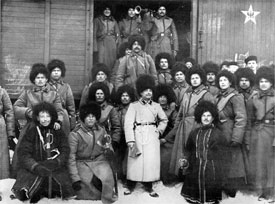
Russian Twenty-third Artillery Brigade about to leave for the front. Portsmouth Athenaeum collection. View larger image.
Preparations for War
For all of its bluster in refusing to settle the problems peacefully, Russia was unprepared for war. Although its army was larger than Japan's, the main Russian strength was in Europe, 12,000 miles away from the Pacific. Russia, fearing a European war or a revolution, kept the best troops in the west. Its far eastern forces were poorly trained and equipped. Although Russia was building up its forces in Manchuria, alarming the Japanese, there was little preparedness for battle. While negotiating with Russia, Japan had planned for war for several years and both its fleet and army were ready.
Beginning Battles
The hostilities began with two Japanese attacks, the most shocking being the assault on the Russian fleet off Port Arthur on February 8, 1904. At about the same time the Japanese sent troops ashore at Chemulpo, Korea, a neutral port. Meeting little opposition at the landing, the Japanese soon controlled Korea, and then advanced up the peninsula to confront the Russians at the Yalu River that separated Korea from Manchuria. The Japanese goal was to drive the Russian army out of Manchuria. By the end of May the Russians were defeated at the Yalu River, while most of their Far Eastern fleet was blockaded at Port Arthur.

Russia's East Siberian Artillery. Portsmouth Athenaeum collection. View larger image.
Right: Japanese reserves in Manchuria waiting for orders to advance. Harper's Weekly.View larger image.

Japanese landing at Inchon, Korea, early in the war. l'Illustration.View larger image.

Japanese infantry on the firing line. Portsmouth Athenaeum collection. View larger image.
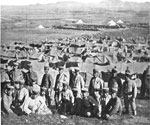

Russian fleet at Port Arthur. Harper's Weekly. View larger image.
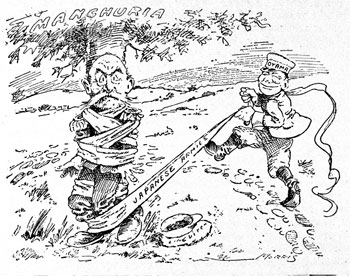
General Oyama and his forces stopped the Russian advance in Manchuria. Harper's Weekly. View larger image.

